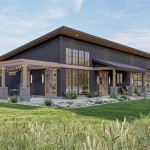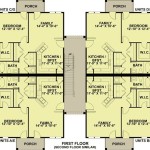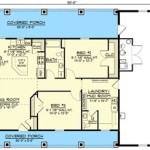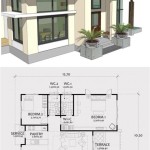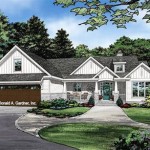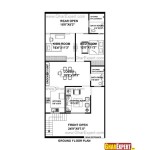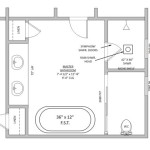House Plans With Build Cost Estimate: A Comprehensive Guide
Embarking on the journey of building a new home is a significant undertaking, fraught with decisions and requiring meticulous planning. Central to this process are house plans, which serve as the blueprint for realizing one’s architectural vision. However, a complete understanding extends beyond the aesthetic appeal of the design; it necessitates a practical assessment of the associated build cost. This article aims to provide a comprehensive guide to navigating house plans with a build cost estimate, enabling informed decision-making and a more predictable build timeline.
The integration of house plans and build cost estimates offers a powerful tool for prospective homeowners. It allows for a proactive evaluation of affordability before committing to a specific design. This prevents potential financial strain later in the building process. Furthermore, a detailed cost breakdown facilitates value engineering, enabling homeowners to identify areas where costs can be optimized without compromising the integrity or desired features of the house.
Understanding the Components of House Plans
House plans are essentially detailed drawings encompassing all aspects of a home's design and construction. They typically comprise several interconnected drawings, each focusing on a specific element of the build. These include:
Site Plan: This drawing illustrates the orientation of the house on the property, including the location of utilities, landscaping features, and setbacks from property lines. It's crucial for understanding how the house interacts with its surroundings and ensuring compliance with local zoning regulations. The site plan also influences the build cost by dictating the amount of excavation and site preparation required.
Floor Plans: These detailed drawings depict the layout of each floor, including room dimensions, wall locations, door and window placements, and the locations of major appliances and fixtures. Floor plans are paramount for interior design and for accurately estimating the quantities of materials needed, such as flooring, drywall, and paint. Complex floor plans with numerous angles and custom features inherently increase construction costs.
Elevation Plans: Elevation plans present the exterior views of the house from different angles. They detail the style of the facade, the roof pitch, the window and door styles, and the materials used for cladding. Elevations significantly impact the curb appeal and overall aesthetic of the house. They also contribute directly to the build cost through the selection of materials and the complexity of the architectural detailing. For example, using brick or stone cladding will be more expensive than using siding.
Foundation Plan: This drawing outlines the foundation system for the house, whether it's a slab-on-grade, crawl space, or basement. The foundation plan is crucial for ensuring the structural integrity of the house and for protecting it from moisture. The type of foundation influences the cost significantly; basements are generally more expensive than slab-on-grade foundations due to the excavation and concrete work involved.
Roof Plan: The roof plan provides a bird's-eye view of the roof, detailing its shape, slope, and materials. A complex roof design with multiple gables or dormers will generally be more expensive to build than a simple gable roof. The type of roofing material chosen also affects the cost; tile or slate roofs are more expensive than asphalt shingles.
Electrical Plan: This plan shows the locations of electrical outlets, switches, lighting fixtures, and the electrical panel. It's crucial for ensuring proper electrical safety and functionality. The complexity of the electrical plan, including the number of circuits and the types of fixtures, will impact the electrical installation cost.
Plumbing Plan: The plumbing plan illustrates the locations of water supply lines, drain lines, and plumbing fixtures. It's crucial for ensuring proper water supply and drainage. The number of bathrooms, the distance between fixtures, and the choice of plumbing materials will impact the plumbing installation cost.
Structural Plan: This plan outlines the structural components of the house, including walls, beams, and columns. It's crucial for ensuring the structural integrity of the house and its ability to withstand loads. The complexity of the structural design and the materials used will impact the cost.
Key Factors Influencing Build Cost Estimates
Accurately estimating the build cost of a house requires careful consideration of various factors, each contributing to the overall expense. Ignoring these factors can lead to significant budget overruns and construction delays.
Size and Complexity: The square footage of the house is a primary driver of cost, as it directly impacts the amount of materials required. Furthermore, the complexity of the design, including the number of corners, angles, and custom features, will increase the labor and material costs. A simple, rectangular house will generally be less expensive to build than a house with a complex, irregular shape.
Materials: The choice of materials significantly impacts the build cost. High-end finishes such as hardwood flooring, granite countertops, and custom cabinetry will increase the cost compared to standard-grade materials. Similarly, the type of cladding, roofing, and windows chosen will affect the overall expense. Sourcing materials locally can sometimes reduce transportation costs and support local businesses.
Labor Costs: Labor costs vary significantly depending on the location, the availability of skilled tradespeople, and the complexity of the project. Areas with high demand for construction services typically have higher labor rates. Obtaining multiple quotes from different contractors is essential to ensure competitive pricing and to assess the experience and qualifications of the workforce.
Site Conditions: The condition of the building site can significantly impact the cost. Sites with sloping grades, unstable soil, or the presence of underground utilities may require additional excavation, shoring, or remediation work, increasing the overall cost. A geotechnical investigation can help identify potential site issues early in the planning process.
Permitting and Fees: Building permits and associated fees are a necessary expense. These costs vary depending on the location and the scope of the project. It is important to factor in these costs when estimating the overall build cost. Furthermore, delays in obtaining permits can lead to construction delays and additional expenses.
Contingency Fund: It's crucial to allocate a contingency fund to cover unexpected costs that may arise during construction. A contingency fund of 5-10% of the total build cost is generally recommended. This fund can help cover unforeseen issues such as hidden structural problems, unexpected material price increases, or changes requested by the homeowner during construction.
Navigating the Build Cost Estimate Process
Obtaining an accurate build cost estimate is a critical step in the home building process. Several approaches can be employed to achieve this, each with its own advantages and disadvantages. Selecting the appropriate method depends heavily on the homeowner's familiarity with construction processes and the level of detail required.
Working with a General Contractor: Engaging a general contractor early in the planning process is often the most effective way to obtain a comprehensive and reliable build cost estimate. A general contractor has extensive experience in managing construction projects and can provide detailed pricing based on the specific house plans. They will typically solicit bids from subcontractors for various aspects of the project, such as framing, electrical, plumbing, and HVAC. The general contractor will then compile these bids into a comprehensive cost estimate, including their own management fees.
Cost-Plus Contracts: A cost-plus contract involves the homeowner paying the contractor for the actual cost of the project, plus a fixed fee or percentage for their overhead and profit. This type of contract provides transparency and allows the homeowner to track costs closely. However, it also requires careful monitoring to ensure that costs are reasonable and that the contractor is managing the project efficiently. It is essential to establish a clear budget upfront and to set limits on certain cost categories.
Fixed-Price Contracts: A fixed-price contract provides the homeowner with a guaranteed price for the entire project. This type of contract offers predictability and minimizes the risk of cost overruns. However, it also requires a very detailed set of plans and specifications, as any changes made during construction will likely result in additional costs. Contractors typically include a contingency in their fixed-price bids to cover potential unforeseen issues.
DIY Estimation: Homeowners with construction experience can attempt to create their own build cost estimate. This involves researching material costs, obtaining quotes from subcontractors, and estimating labor hours. While this approach can potentially save money, it requires a significant time investment and a thorough understanding of construction processes. It also carries a higher risk of errors or omissions.
Utilizing Online Cost Estimators: Several online cost estimators are available that provide ballpark estimates for building a house. These tools typically use data on average construction costs in a given area and allow the user to input information about the size, style, and features of the house. While these estimators can provide a general idea of the cost, they should be used with caution, as they may not accurately reflect the specific conditions of the project.
Regardless of the method chosen, obtaining multiple cost estimates from different sources is crucial to ensure competitive pricing and to identify any potential discrepancies or omissions. Thoroughly reviewing the estimates and asking clarifying questions is essential to fully understand the scope of work and the associated costs. Furthermore, it’s advisable to engage an experienced construction consultant to review the plans and estimates for potential cost-saving opportunities and to identify potential risks or challenges.
Ultimately, a well-integrated house plan with a detailed build cost estimate serves as a roadmap for a successful home building project. It enables informed decision-making, promotes budget adherence, and facilitates value engineering. By carefully considering the various factors influencing build costs and by engaging qualified professionals, prospective homeowners can confidently navigate the complexities of construction and realize their dream home.

Estimated Cost To Build Report Information House Plans And More

House Cost Estimator To Build A Home Building

Get The Lowdown On Cost To Build Estimates Houseplans Blog Com

House Plan Central Hpc 2026 16 Is A Great Houseplan Featuring 2 Bedrooms And Bath 0 Half

Get The Lowdown On Cost To Build Estimates Houseplans Blog Com

How Much Does It Cost To Build A House Or Extension Estimating Costs For Domestic Building Projects Harvey Norman Architects Cambridge Bis Stortford Saffron Walden Residential Cambridgeshire Architect

Get The Lowdown On Cost To Build Estimates Houseplans Blog Com

Get The Lowdown On Cost To Build Estimates Houseplans Blog Com

House Building Calculator Estimate The Cost Of Constructing A New Home Construction

Building By The Book Someday My Blue Prints Will Come Hometown Handlebar

